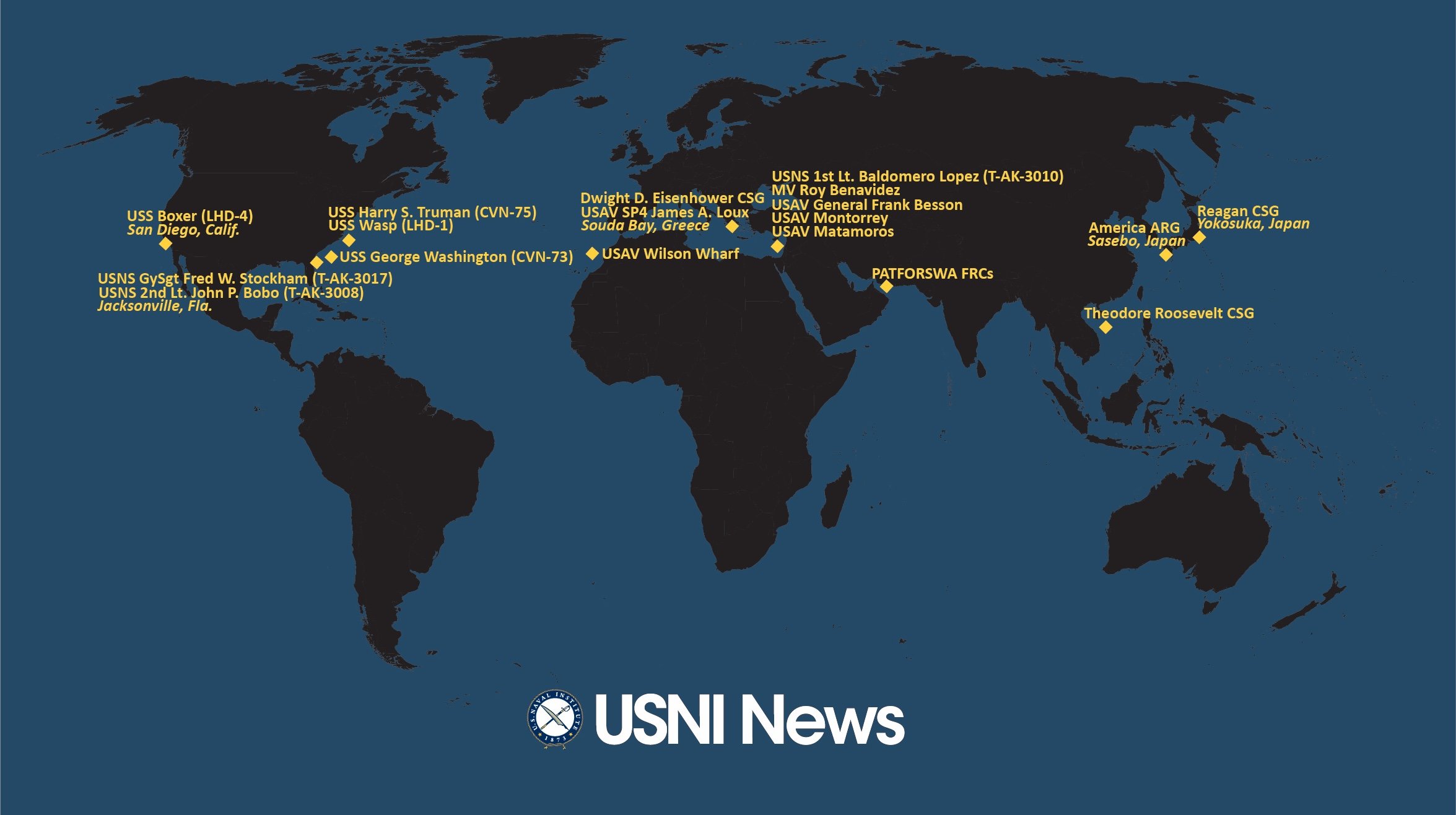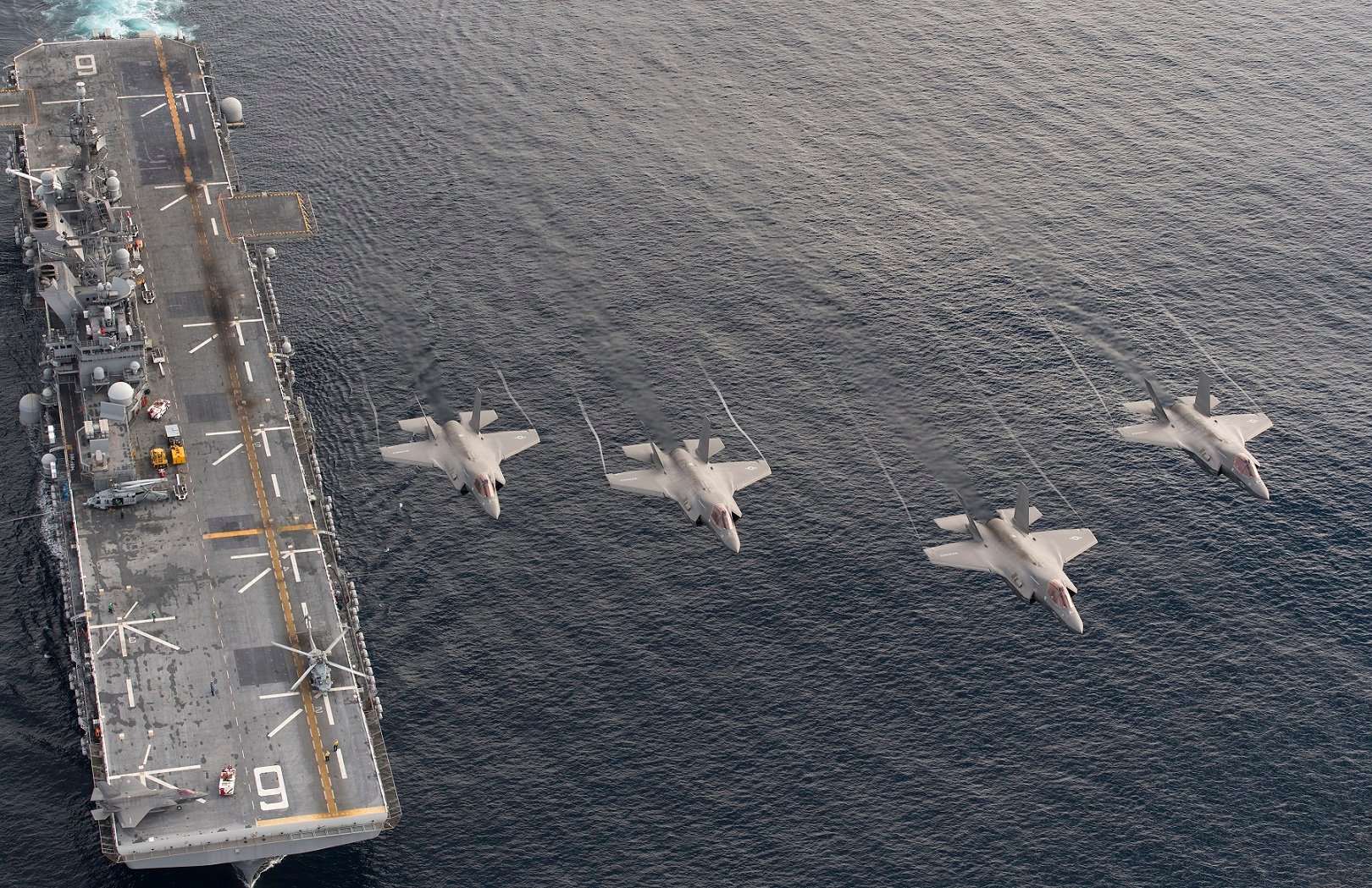
The 15th Marine Expeditionary Unit will experiment with two different mixes of aircraft during at-sea training exercises before leaving with amphibious assault ship USS America (LHA-6) for its first overseas operational deployment, officials told USNI News last week.
America is the first of two ships designed without a well deck for employing landing craft but with spacious decks for aircraft, repair and aviation fuel storage that will support more aviation missions than the Navy’s existing fleet of big-deck amphibious assault ships.
“We have a plan to experiment with two different kind of basic configurations for the first two at-sea periods, so by the third one, we are going to go ahead and try to validate what we think… our load plan is going to be,” Col. Joseph Clearfield, commander of the 15th MEU, said in a Jan. 19 interview.
“We are looking at a slightly different ACE [aviation combat element] mix than the arch-type MEU. We’ll see how it goes at the first at-sea period,” Clearfield said, in a joint interview with Capt. Homer Denius, commodore and commander of San Diego-based Amphibious Squadron 3, at Expeditionary Warfare Training Group in Coronado, Calif. They were wrapping up the rapid-reaction planning process that helps set the schedule and focus of the workup period and three planned at-sea training exercises.
Clearfield is envisioning an “enhanced aviation mix” with one additional CH-53E Super Stallion helicopter, an additional UH-1 Huey utility helicopter and one or two AV-8B Harrier short-takeoff-and-landing jets.
“We are taking a hard look during the workup to see if this is supportable and feasible and suitable,” he said. The 15th MEU has crafted an initial load plan, which at the first at-sea exercise will help answer: “Does this work, does everything fit, and can we get it on and off in accordance with how we think we could?” Its ground combat element won’t differ much than if its Marines deployed on another big deck amphibious ship, he added, but he didn’t detail what just what that force will look like, from aircraft to vehicles and weapons, and the differences in the load-out plans.
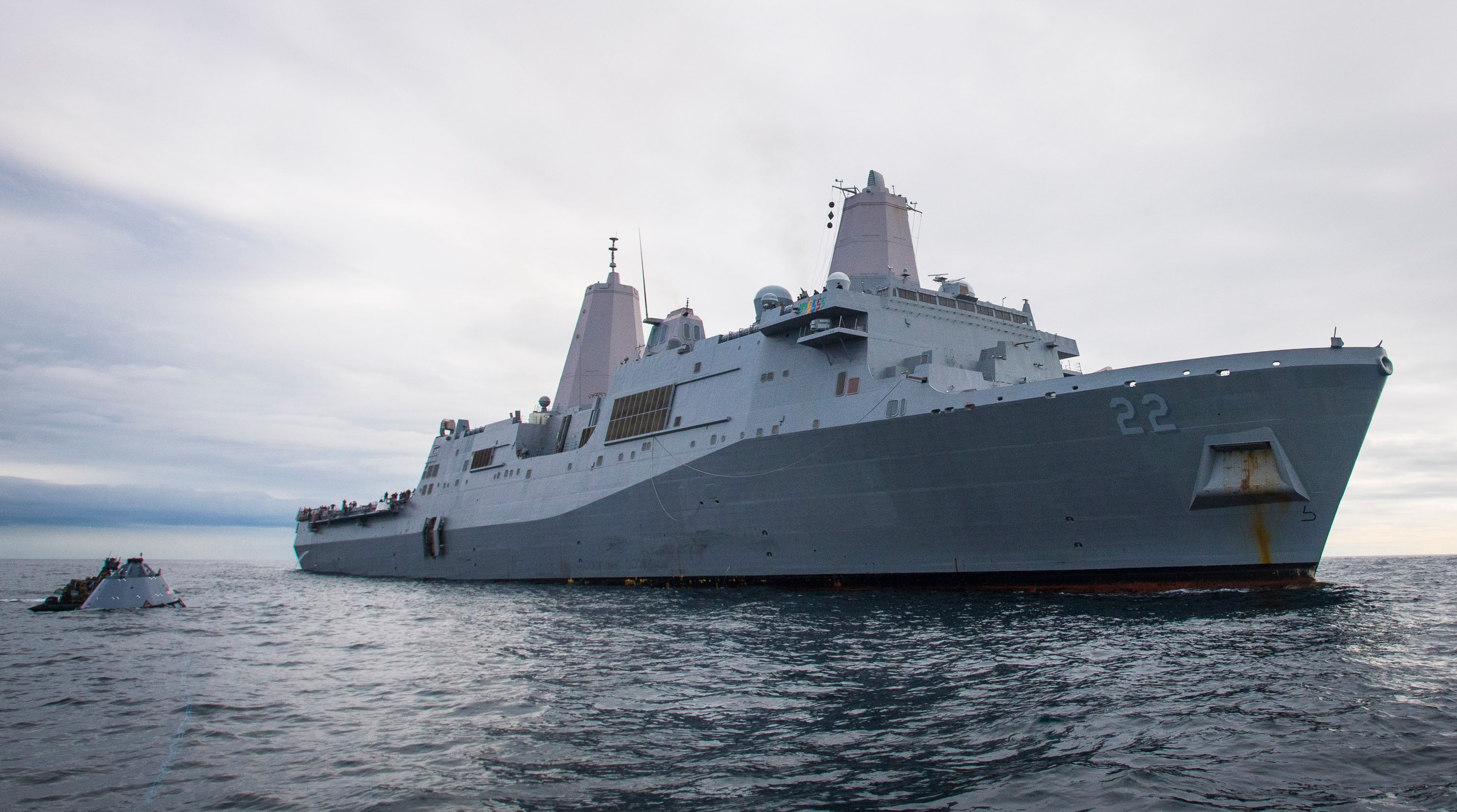
Denius said commanders are focused on “the flexibility to move that around… and support whatever is the mission out there.”
The America Amphibious Ready Group and 15th MEU will put that flexibility to the test during the predeployment training plan, or PTP, especially during three at-sea periods, and help shape an expeditionary force that will maximize America’s unique capabilities. “We are going to be swapping (aircraft and equipment) during our PTP,” Denius said. “We are going to get used to that. The norm is going to be flexibility and change to accomplish the mission, rather than, this is the force, this is how it’s set up and let’s go out and make the mission fit the force that’s out there.”
For the deployment, the 15th MEU and America Amphibious Ready Group retain their landing craft aboard two other amphibious ships with well decks, USS Pearl Harbor (LSD-52) and USS San Diego (LPD-22), and also support aircraft from their smaller flight decks. The MEU would place large vehicles, weapons and equipment like M1A1 tanks or bulldozers and other heavy loads stowed aboard America that can’t be lifted ashore by Osprey or helicopter or craned off the ship – say onto a pier or lighterage or other surface connector, or mobile sea bases – on either Pearl Harbor or San Diego.

Most MEU/ARGs regularly put aircraft detachments on the smaller ships. It’s not uncommon to place the heavy-lift CH-53E Super Stallions, some MV-22 Ospreys or AH-1 Super Cobra and UH-1 Huey helicopters on the amphibious transport dock or LPD. Clearfield said he’ll mix up the spread of aviation assets across the ARG’s ships, and “we are going to take a look at all three mixes during our deployment and see.”
“If we want to reconfigure, mid-deployment, whether it’s aircraft or equipment, how long will that take us to do and what else would we need to do,” he added. “We are hoping to get that straight during the two at-sea periods.”
America has no well-deck to house Landing Craft Air-Cushioned and Landing Craft Utility that transport Marines and their heavy combat equipment and supplies ashore. But officials note that it can send Marines via MV-22 Osprey tiltrotor aircraft and helicopters faster ashore and at much further distances from the beach or shore, far enough, say, to avoid shore-based enemy fire or for more-stealthy operations than if it launched them by landing craft.
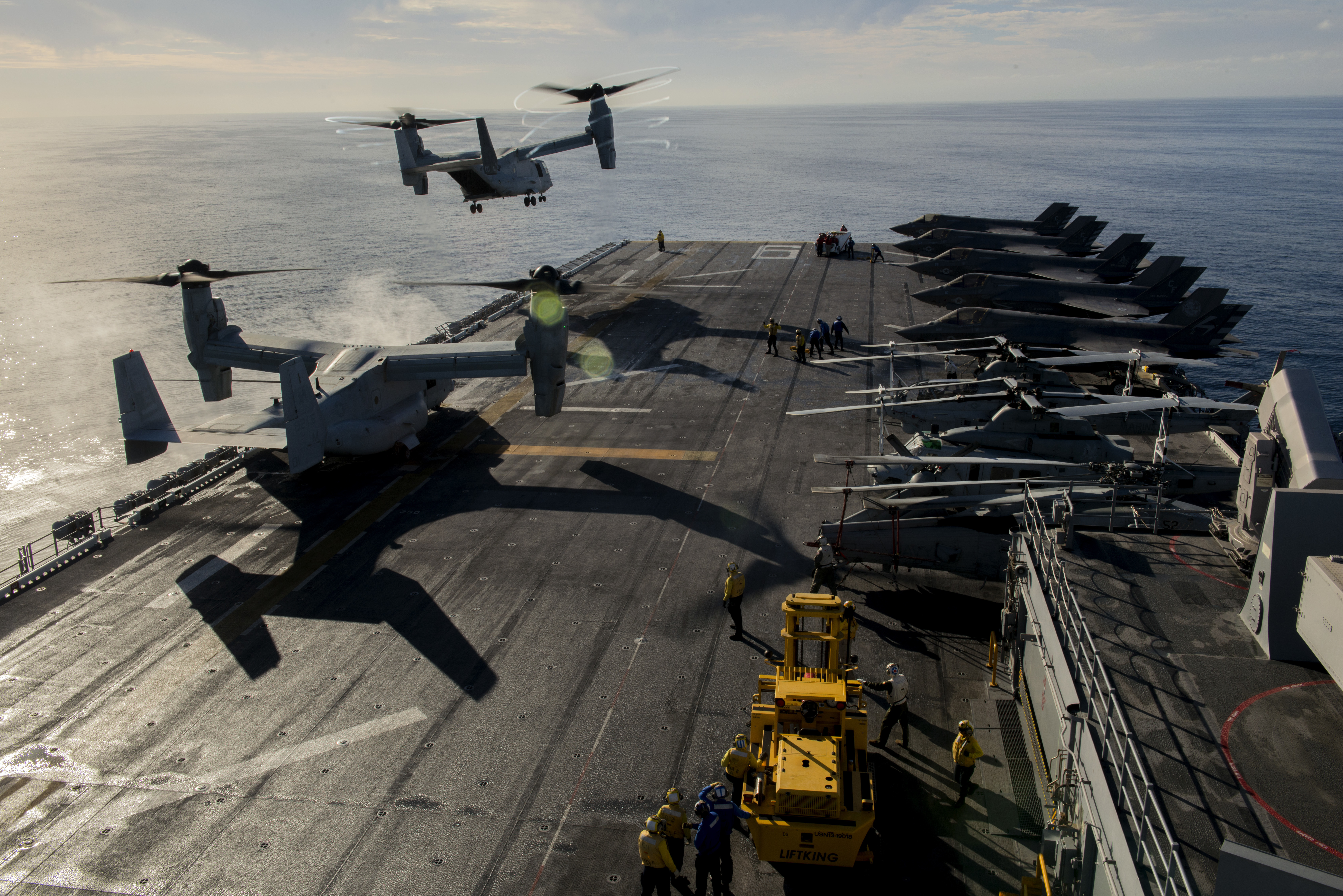
To that end, its commanders say, the 15th MEU/ARG remains a highly-capability and perhaps more flexible force. The lack of a well deck, often cited by critics in recent years, won’t diminish its combat and operational might, they said.
“We are here to load up the Marines with a capable and effective force that can be used throughout the world,” Denius said. “We have a set of missions, and we load up a bunch of equipment to the set of missions. (America) It doesn’t change that. The mission set hasn’t changed.”
“We’re going to move things by air some more,” he said. “So there will be a concentration on how do we make these mission sets happen by air. Does that mean some lighterage? We’ll go through the machinations. The Marine Corps will decide what’s going to happen on the ground and what they need.”
“I have two other ships that do have well decks and will have LCACs with them, so we can still put heavy gear onto the beach like we’ve always have,” he added. “I just have to be ready to move a larger force from the LHA by air than I normally would, and plan for that. What does that mean?”
So when it’s time to launch the landing force, what’s needed and how the ships react and respond will depend on the situation, environment, weather, winds and other factors. “It gets tactical very quickly,” noted Denius, a self-described “amphib guy,” with multiple tours on various amphibious ships.
“Tactically, it may change a little bit. Strategically, operationally overall, it’s the same mission sets. It’s the same Marines. It’s the same equipment that’s going ashore,” he added. “And we are going to get it ashore and protect ourselves, the ARG, and make all those missions happen.”
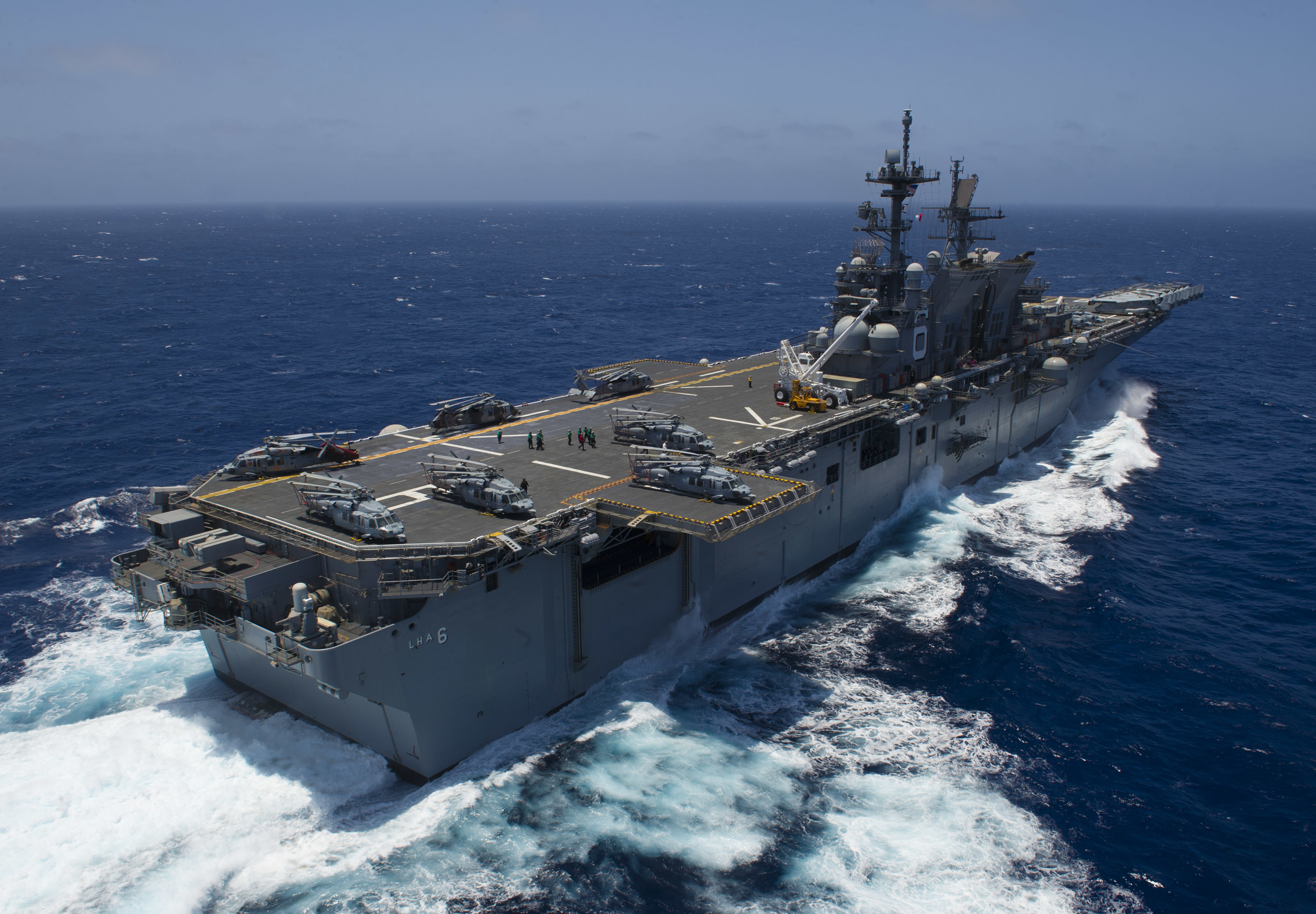
Figuring out the right configurations will be key for America, on this deployment as well as generally for the next sister ship, Tripoli (LHA-7). There’s no preset play book on how to do this. “It is what we make it,” Denius said. Both commanders said they are clear on the mission sets they and the MEU/ARG will be evaluated on during the workup period. “When we leave, we’ll be ready to provide the fleet and the combatant commanders this really unique amphibious task force that is ready to respond to any crisis or any contingency around the whole range of military operations,” Clearfield said. “That’s really clear, it’s well defined.”
“Through the workups, we’re going to have a chance to revisit… what we thought and why we did certain things. I feel very comfortable” with making changes, where needed, or sticking with the standard, he said.
Denius said the PTP will help sort out “the big question from the naval side” of how those extra aircraft affect operations and activity the flight and hangar decks and elevators, and how quickly the deck crews adapt to different operation tempos and manage work and movement within the spaces.
The landing craft mix has varied by ARG, depending what the commodore and MEU commander decided they need and what ship capability and stowage mix they have available. “Do we need to go lighter? Do we need to go heavier? What do we think? What is the world situation right now?” Denius said. “All those things go into it, and it can change in the next six months.”
“That’s the flexibility of the force,” he added.
Clearfield said “there’s excitement” about what America can bring to the expeditionary force on this first deployment. Marines and sailors know that “this is something different and there’s a lot of people that are interested in what it’s going to be,” he said.
“We can’t embark things on the America that we can’t get off by a surface connector, that’s the obvious thing. So back planning from that, what are the likely missions, what are we going to need to provide to the fleet commanders. What are they relying on us for – and we’ve done that analysis,” he added. “I think we’ve designed our PTP where we are going to get a chance to test and experiment.”
Denius said the amphibious force will work toward more interoperability and through how it can make the most of the MEU and ships’ strengths and within the Navy’s Composite Warfare Commander concept. “How do we leverage each others’ capabilities… with just the assets between us” to accomplish missions and defend the ARG, he said. “I don’t have a lot of striking power, but he does,” he added, gesturing to Clearfield.
Commanders are keenly aware of the need to meet and operate in contested domains by near-peer competitors and trans-national threats, as top naval leaders have been emphasizing, Clearfield said. “So how the green can integrate with the blue, while we are at sea, and vice versa… we are taking a really, really hard look at that.”
Officials expect the hoopla over a lack of a well deck will quickly dissipate. “We are more focused on the enhanced capabilities that we get” than singular characteristics of the ship, the colonel said, such as how they will do reconnaissance, electronic warfare or intelligence ashore and at sea.
Clearfield said he’s eager and curious to see how the force will operate if and when the MEU/ARG gets a single-ship mission, something that’s no uncommon as expeditionary forces conduct split-ARG operations to conduct operations and theater-support missions typical of every deployment. It’s going to be interesting when we return what the lessons learned will be with the America” and other ships,” he said. “It’s going to be different.”
Clearfield said he’s hopeful that maintenance will be improved as the ship supports the MEU’s sustainment with more fuel, better command and control and battlefield awareness.
America’s hybrid-electric power plant, like that on USS Makin Island (LHD-8), lets the ship cruise more efficiently, fuel-wise. It also gives it more speed, too, than the ARG’s smaller amphibs. “It’s not a steam engine, it’s not a diesel – but everybody else is – so how does this work and how does she like to settle out? Do I need to sprint? Slow down? How does that play out?” Denius said. That will play out as the ships conduct flight operations as they head west on deployment.
Unlike other big decks, America doesn’t have a crew with expertise in well deck operations and surface connectors. Denius said he’s curious how that will mesh as they work with the other ships conducting those operations. “Is it going to be as smooth and flow as well?” he wondered. During RIMPAC 2016, America did operate with the Royal Australian Navy, which brought a smaller amphibious ship and embarked Australian and U.S. amphibious vehicles for shore assaults.
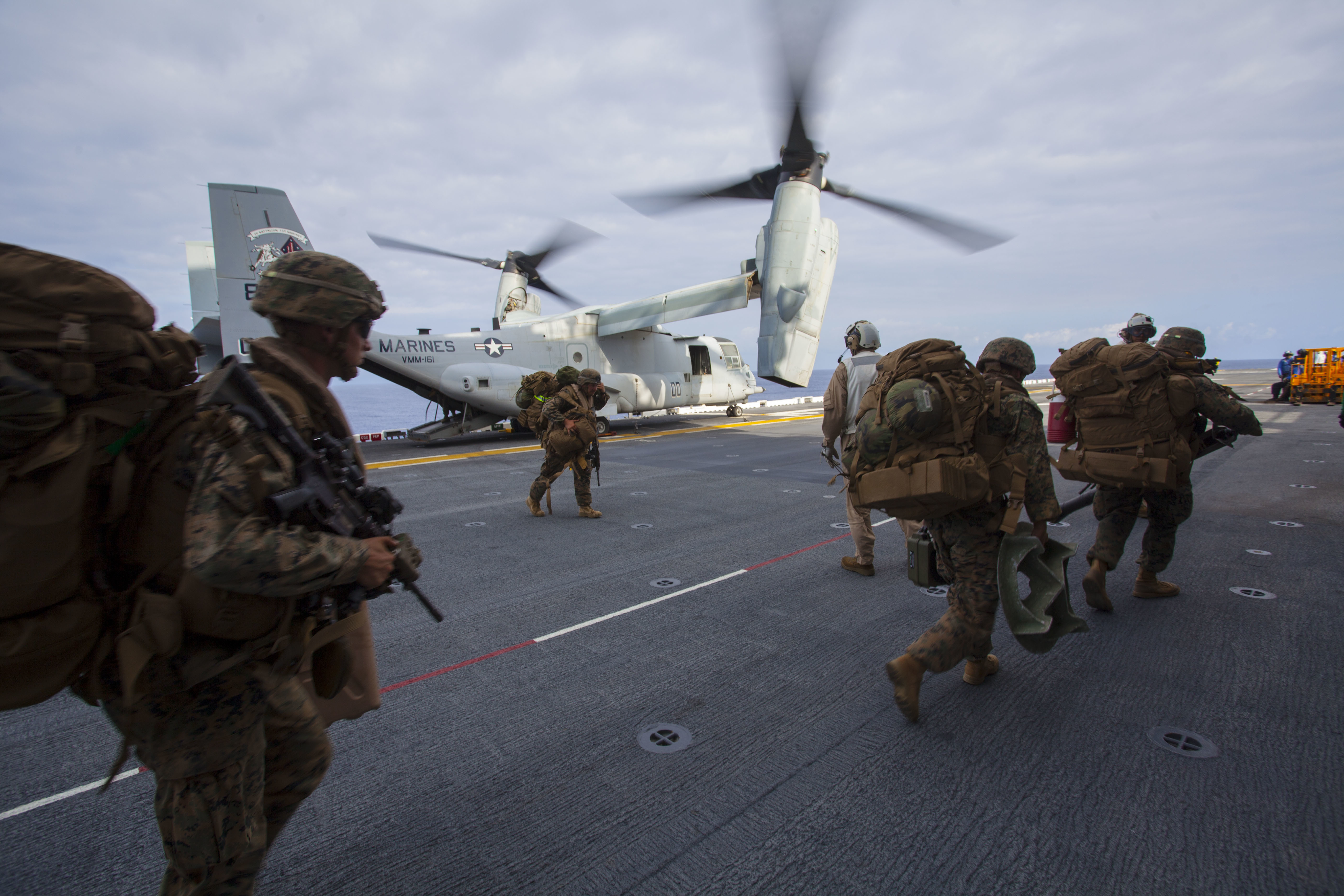
Sure enough, all eyes will be on them as the MEU/ARG enters the predeployment training and experts watch closely and study what the forces do and how they perform. “We are going to have a lot of people embarked… specifically looking at the America and answering a lot of the questions,” Clearfield said. It will be a tight squeeze aboard with evaluators, data collectors and exercise controllers in the coming months during at-sea training, pierside work and through final ship maintenance before the amphibious task force deploys.
Marines and sailors will be challenged to try and capture “best practices” through the workup cycle and deployment. “When we get back,” he said, “we’ll have a really good idea for both the Marine Corps and the big Navy of how this ship community can be employed and maybe what the best configuration is and what the pluses and what the minuses are.”
“We’re not any different, capability wise,” Clearfield added. “In the end, we’ll be the most capable crisis-response force in the AOR, no doubt about that.”
For the upcoming deployment, Marines with Camp Pendleton, Calif.-based 1st Battalion, 5th Marines, will lead Battalion Landing Team 1/5, the MEU’s reinforced ground combat element. The 15th MEU includes Combat Logistics Battalion 15 as its logistics combat element and the reinforced unit led by Marine Medium Tiltrotor Squadron 161 as its air combat element.


